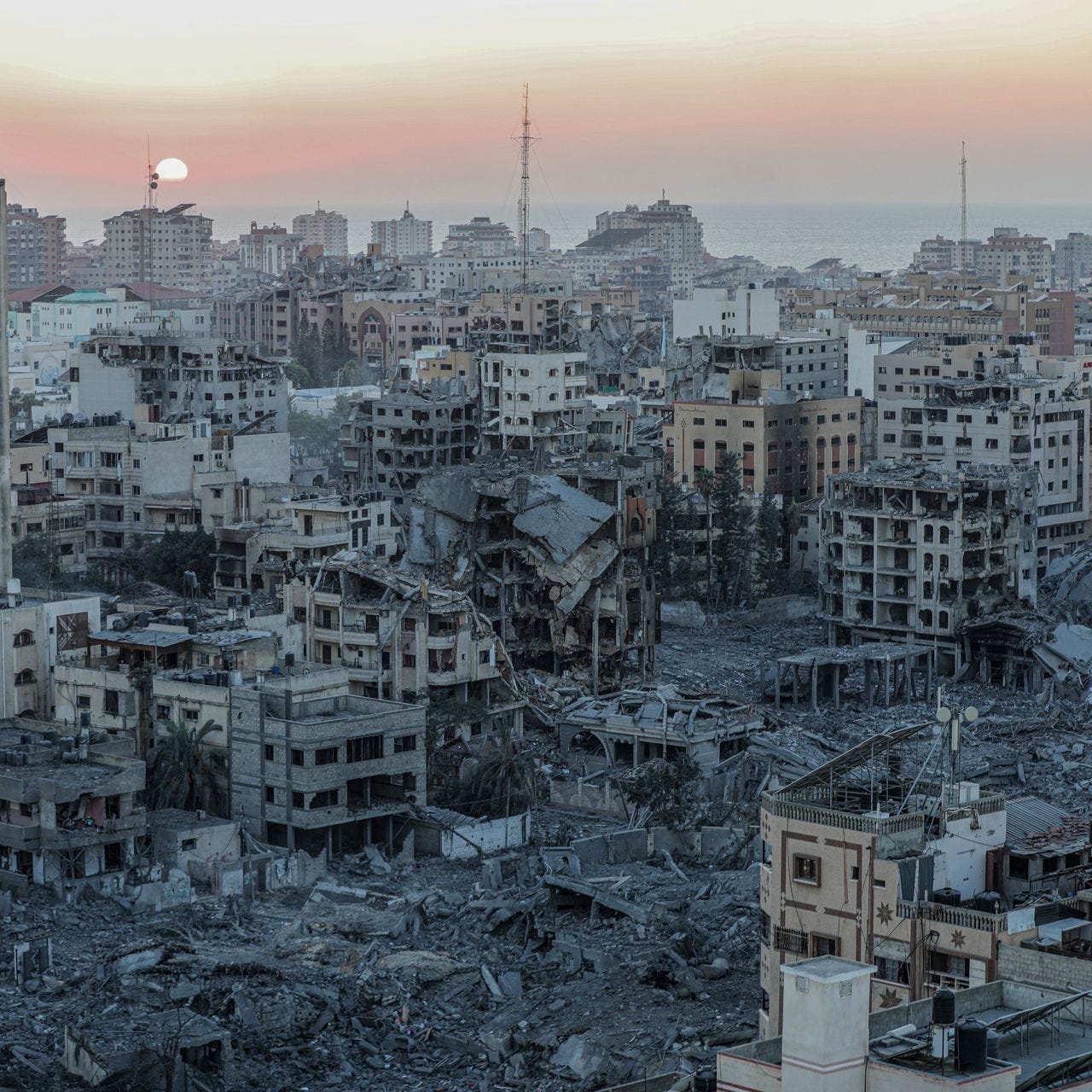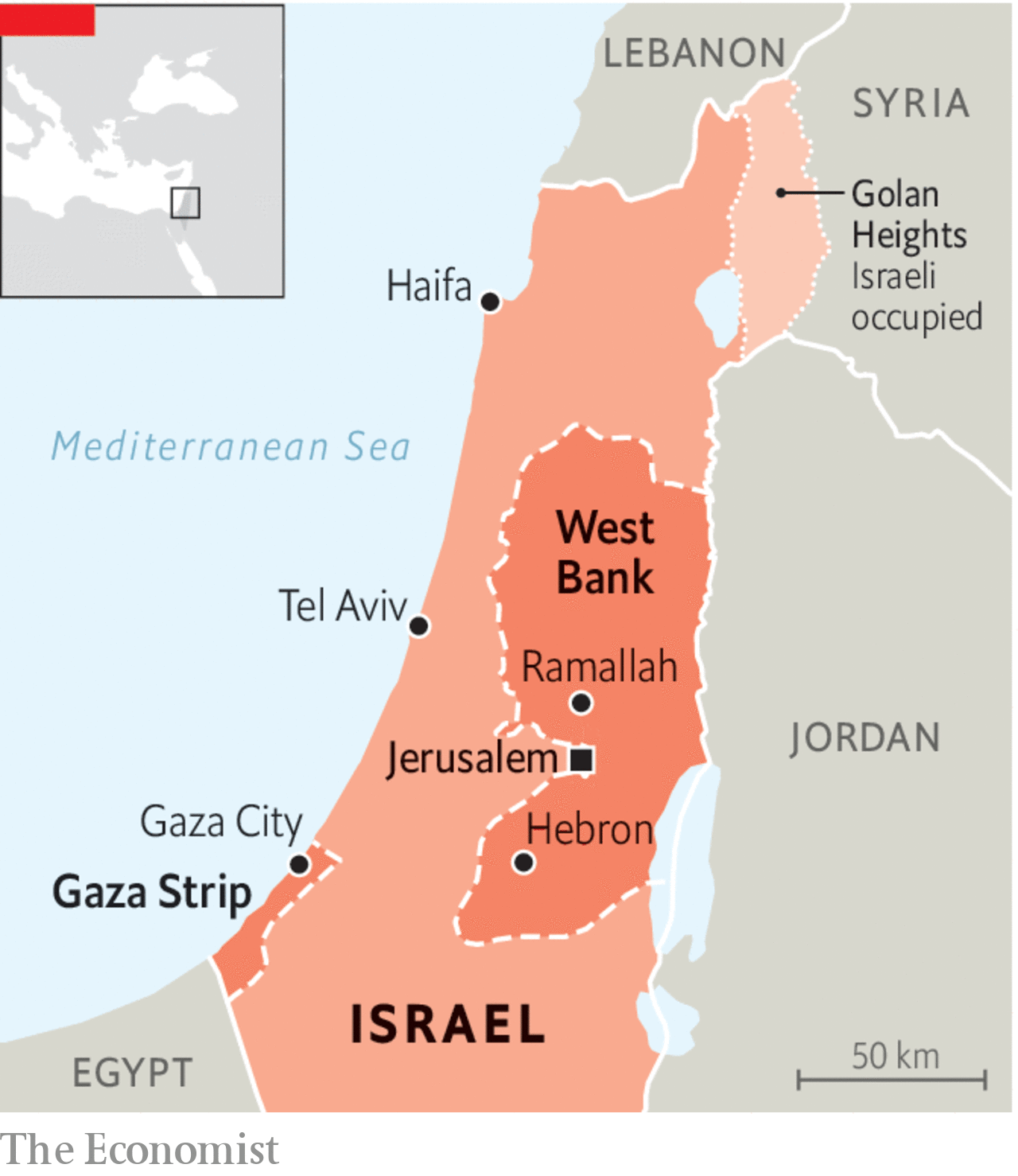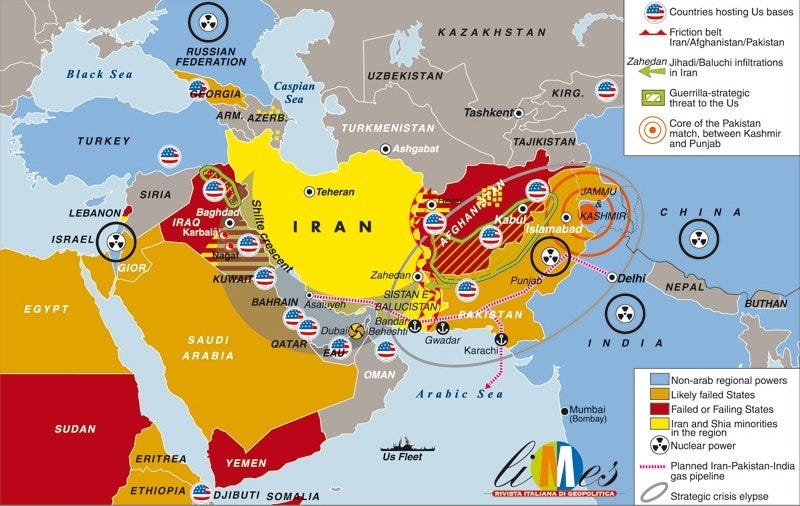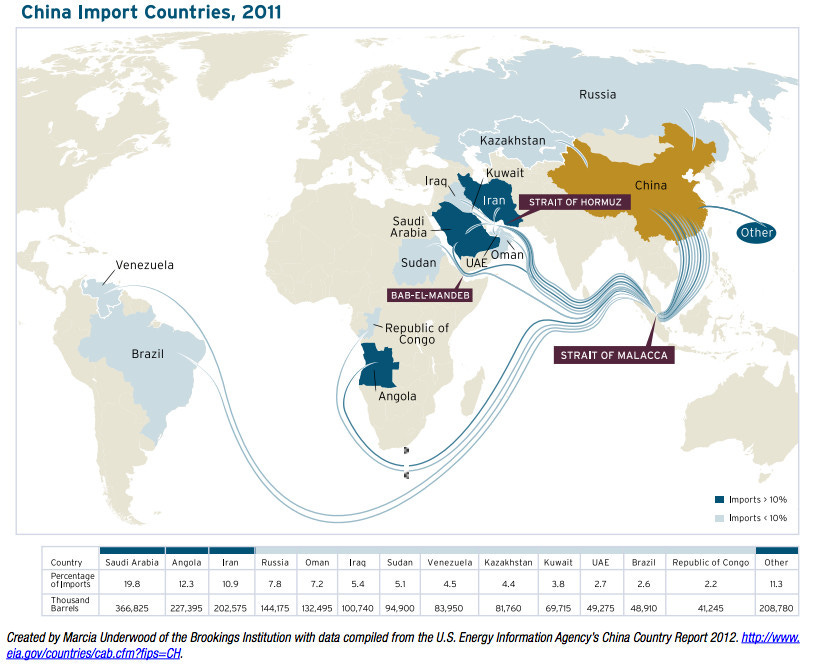Israel must exercise restraint
Hamas has laid a trap. A bloodletting in Gaza could draw the US into war with Iran, backed by China and Russia.
Figure 1: Gaza City
Key Takeaways
1. Israel is being lured into a trap set by Hamas and should exhibit restraint to avoid a larger regional conflict
2. Emotionally charged content and narratives on social media complicates diplomatic efforts and polarizes global opinions
3. Given their unique positions and stakes, Saudi Arabia and China could act as pivotal mediators in defusing the escalating tensions in the Middle East
The terrorist attack in Israel on 10/7/23 killed 10x as many people as 9/11 on a per capita basis. There is widespread, righteous anger at Hamas in Israel and the Israeli government is making every indication that a ground invasion into Gaza is imminent. Israel must exercise restraint or else fall into the trap Hamas laid. By committing such heinous acts, Hamas’s cynical goal was to lure Israel into Gaza and then incite the Arab world with TikTok videos, Telegram messages, and Tweets about civilian collateral damage.
When a blast at a hospital occurred this week in Gaza allegedly killing hundreds of civilians, both sides rushed to blame one another. Israeli official said it was an errant terrorist rocket and Palestinian official said it was an Israeli airstrike. In the social media age, the truth didn’t matter and protests broke out from Tehran to Detroit. If Israel invaded Gaza, this episode would be minor by comparison.
One can both care about the conditions of Palestinians and be appalled by Hamas. One can support Israel and call for restraint. But in the information warfare age, holding such nuanced views can be difficult. You’re either with us, or you’re with the terrorists.
Hamas has lost the credibility to lead Gaza and must be dismantled. But Israel going into Gaza guns blazing wouldn’t be good for anyone, least of all Israel. Someone must diffuse the situation diplomatically, possibly Saudi Arabi or China.
The Guns of October
Barbara Tuchman’s classic book The Guns of August explains how the world sleepwalked into a cataclysmic conflict, WW1, that nobody wanted in August 1914. The momentum from a series of interlocking alliances, previously laid military plans, and bureaucratic inertia dragged the world into war.
In October 2023, a series of events threatens to unleash a regional or even global conflagration.
· On October 7th, 2023 Hamas terrorists murdered civilians in southern Israel
· Oct. 8: the US moves an aircraft carrier strike group (CSG) into the region[i]
· Oct. 10: the Houthi leader announced that any intervention in Gaza by the US would result in Iran-backed Houthi (Yemen) intervention[ii]
· Oct. 11: Iran-backed proxy militia Hezbollah strikes Israel on its northern border, a potential second front[iii]
· Oct. 12: Israel carried out artillery strikes in Syria after a number of mortars were launched toward northern Israel[iv]
· Oct. 14: Iran stated it will intervene in the war if Israel continues its military operations or launches a ground invasion against Gaza[v]
· Oct. 16: the US moves a 2nd CSG into the region[vi]
· Oct. 17: blast at hospital in Gaza sparks mass protest worldwide; the king of Jordan cancels a planned meeting between the Egyptian president, head of the PLO in the West Bank, and US President Joe Biden
· Oct. 19: US forces are attacked by Iran-backed proxies in Iraq, Syria, and Yemen[vii]
· Oct. 19: The US State Department issues a rare world-wide alert advising American citizens "to exercise increased caution”[viii]
The stage is set for a wider regional war if Israel invades Gaza. The region is a tinderbox.
Figure 2: Israel and Gaza
What WW3 could look like
WW3 likely wouldn’t be a global nuclear war, but rather a series of kinetic proxy wars, grey-zoneconflicts, economic wars, information wars, and global terror attacks. The following scenario envisions what could happen if Israel recklessly flattened Gaza:
· A biblical humanitarian crisis erupts as more than 2 million Gaza refugees are displaced. The refugees will likely migrate to Europe, making the 2015 migrant crisis look like a warm-up. A massive political backlash would potentially ensue and these migrants would be ripe for radicalization.
· The horrific social media videos emanating from Gazan refugees will set the Global South against the West and drive them into the arms of China and Russia
· Iran-backed militias in Yemen, Lebanon, Syria, and Iraq will attack Israel from all-sides
Figure 3: Middle East tinderbox
· Calls for Jihad could unleash terror attacks worldwide, particularly in Europe and possibly in the US
· Iran itself may join the conflict; global oil prices would probaby spike
· The US may get sucked into the conflict to protect Israel; Iran is far stronger than US enemies in Afghanistan and Iraq during the Global War on Terror
· If the US gets into a direct conflict with Iran, Russia/China may use the opportunity to bleed the US and provide aid to Iran in a US-Iran proxy war
· If the US public refuses to allow boots on the ground in an US-Iran war (likely), the entire US position in the middle east could be rolled up and ejected
· If the US Navy blockades Iranian oil tankers in the Strait of Hormuz (Persian Gulf), China could be brought into the war directly
Figure 4: Importance of Strait of Hormuz to Chinese oil imports
A de-escalatory pathway
All of that must be avoided at all costs. The US cannot diffuse the situation diplomatically because the US is not seen as a neutral actor. Saudi Arabia, perhaps secretly induced by US nuclear reactor technology, may be seen as a neutral Arab mediator and could potentially broker a ceasefire between Israel and Hamas. China may also be able to broker a ceasefire, and high oil prices would hurt its economy. Chinese-brokered peace will be hard for the US to swallow, but the alternative is worse. Better to take the “L” and regroup.
Saudi Arabia, as one of the leading Sunni powers in the Middle East, has historically positioned itself as a key arbitrator in regional disputes. Its stature within the Arab League and its custodianship of Islam's holiest sites lend it a unique authority in the Arab world. Moreover, the kingdom has, in recent years, signaled its intent to modernize and diversify its economy and diplomatic outreach, making peace in the region a crucial component of this vision.
On the other hand, China's rapidly growing global influence, particularly in economic and infrastructure development, positions it as a neutral actor with significant stakes in regional stability. China's Belt and Road Initiative extends through the Middle East, making the region's peace vital for its global trade ambitions. Moreover, China maintains cordial relations with both Israel and many Arab states, ensuring it doesn't carry the historical baggage some Western nations might. Its role as a permanent member of the UN Security Council further augments its diplomatic leverage. Both nations, for these reasons, stand out as potential credible mediators capable of brokering a peace agreement in such volatile situations.
But Hamas must go and Israeli public anger must be satiated. Israel should use a scalpel rather than a sledgehammer to remove Hamas. It is estimated that there are 30,000 Hamas fighters and they’ve no doubt booby trapped Gaza. They also occupy a vast tunnel network as deep as 60m below Gaza. All of these fighters cannot realistically be eliminated without catastrophic civilian or Israeli military deaths. Though a heavy blow against Hamas would be satisfying, Israel must not fall into that trap and should exercise restraint.
In the intricate tapestry of geopolitics, the Middle East remains a region where threads of history, religion, and power politics intertwine tightly. The recent conflagrations, backed by decades of historical grievances, threaten not just regional stability but the global equilibrium. It becomes imperative, therefore, for influential nations to step beyond traditional alliances and act as impartial mediators, ushering in dialogue and diplomacy. The role of Saudi Arabia and China, given their unique positions and stakes, could be pivotal in this context. As the world stands on the precipice of potential widespread conflict, it is a shared responsibility of the global community to champion peace, dialogue, and understanding. The future rests heavily on the choices made today.
[i] https://x.com/CENTCOM/status/1711083799822705014?s=20
[ii] https://www.reuters.com/world/yemens-houthis-warn-they-will-fire-missiles-drones-if-us-intervenes-gaza-2023-10-10/
[iii] https://en.wikipedia.org/wiki/Timeline_of_the_2023_Israel–Hamas_war
[iv] https://www.timesofisrael.com/liveblog_entry/israel-carrying-out-artillery-strikes-in-syria-after-mortar-fire/
[v] https://web.archive.org/web/20231017100547/https://www.wionews.com/world/israel-vs-hamas-iran-threatens-to-intervene-if-israel-doesnt-stops-attacking-gaza-says-report-647270
[vi] https://abcnews.go.com/International/exclusive-us-send-2nd-aircraft-carrier-eastern-mediterranean/story?id=103984246
[vii] https://www.haaretz.com/israel-news/2023-10-19/ty-article-live/escalation-on-israels-northern-border-continues-overnight-after-snap-biden-visit/0000018b-456d-d614-abcf-ed7fca660000
[viii] https://www.cnn.com/2023/10/19/politics/state-department-worldwide-alert/index.html







